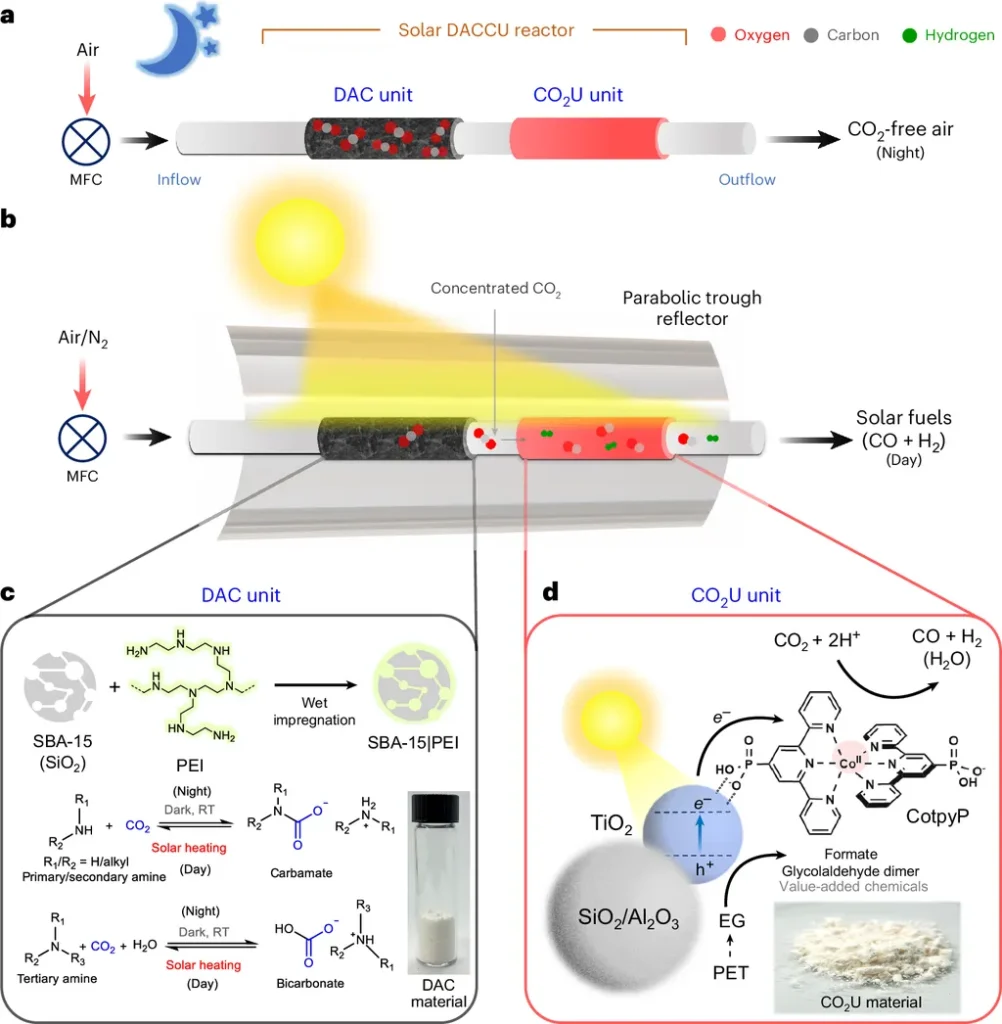In the realm of energy research, a significant stride has been made by Muneeb ur Rahman, a researcher affiliated with the University of Central Punjab, Pakistan. The study, published in the journal Applied Catalysis B: Environmental, presents a novel approach to enhance the efficiency of CO2 photoreduction, a process that converts carbon dioxide into carbon monoxide using sunlight. This process is crucial for developing solar fuels, which are seen as a promising avenue for clean energy.
The research focuses on overcoming two major challenges in CO2 photoreduction: the slow desorption of CO and inefficient charge separation. To address these issues, Rahman has developed a unique nano-heterojunction structure. This structure is created by assembling zero-dimensional (0D) InVO4 nanoparticles onto one-dimensional (1D) Cu-doped TbFeO3 (CTFO) nanorods, forming a 0D/1D heterojunction.
The innovation lies in the multi-synergetic design of this heterojunction. By substituting Cu2+ ions at the Fe3+ sites in TbFeO3, Rahman induces a compression in lattice strain and creates oxygen vacancies. These vacancies act as electron traps and CO2 chemisorption sites, facilitating multichannel charge flow and breaking the spin-polarization of pristine TbFeO3. This design couples maximum surface active sites with short charge diffusion routes, enhancing the overall efficiency of the photoreduction process.
Moreover, the 0D/1D lattice mismatch creates a built-in electric field at the interface, which significantly enhances the lifetime of charged species. This results in a high CO yield of 65.75 mmole g-1.h-1 and a selectivity of 95.93%. The study also confirms a shift in the Fermi level toward the conduction band and the existence of spin-hybridization, further supporting the enhanced performance of the heterojunction.
The practical applications of this research for the energy sector are substantial. By improving the efficiency of CO2 photoreduction, this technology can contribute to the development of solar fuels, providing a clean and renewable energy source. Additionally, the approach of integrating defect-engineering, strain-compression, and interfacial design offers a promising strategy for advancing other photocatalytic processes in the energy industry.
In summary, Muneeb ur Rahman’s research presents a significant advancement in the field of CO2 photoreduction. By addressing key challenges and demonstrating high efficiency and selectivity, this study paves the way for more effective and sustainable energy solutions. The findings were published in the journal Applied Catalysis B: Environmental, providing a valuable contribution to the ongoing efforts in clean energy research.
This article is based on research available at arXiv.

